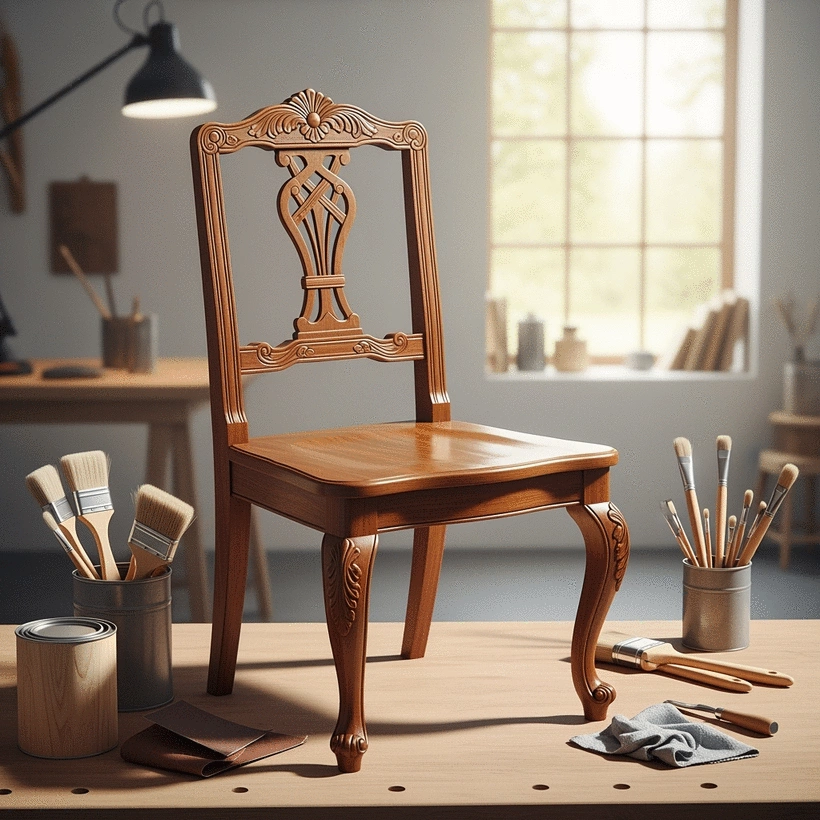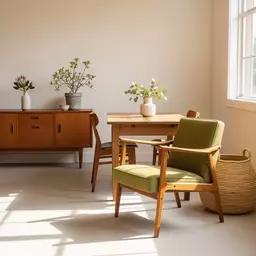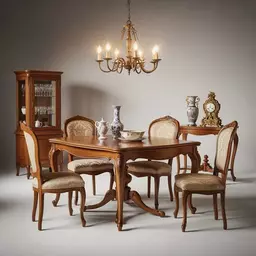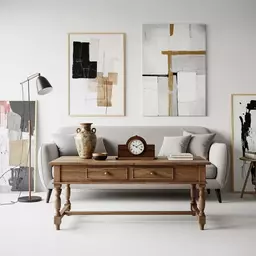Care for Vintage Upholstery
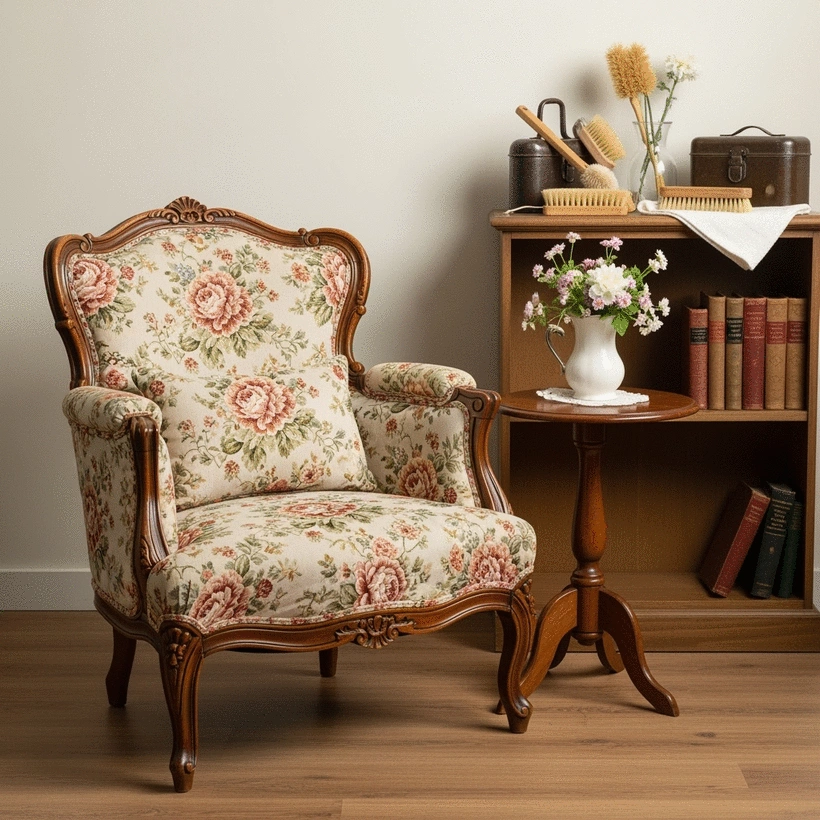
As the saying goes, "Antiques are not just old; they are stories waiting to be told." Caring for vintage upholstery is not merely a task; it's an art that celebrates craftsmanship and history. Dive into essential strategies that not only enhance your home but also preserve the stories of yesteryears.
What You Will Learn
- The importance of preserving vintage upholstery to maintain its beauty, value, and history.
- Different types of vintage fabrics and their unique cleaning and care requirements.
- Gentle cleaning techniques that protect delicate fabrics while keeping them looking fresh.
- Strategies to protect upholstery from environmental damage, including sunlight and humidity control.
- Guidance on when to opt for DIY cleaning versus hiring a professional for restoration.
- Best practices for regular maintenance to extend the life of your cherished pieces.
Key Techniques for Vintage Upholstery Care
Effective strategies to maintain the beauty and longevity of vintage upholstery are essential for every antique enthusiast. Restoring antique furniture safely ensures these pieces can be enjoyed for generations.
Regular Vacuuming
Using a soft brush attachment can help remove dust without damaging the fabric.
Spot Cleaning
Address stains promptly with suitable fabric-specific cleaners to maintain the upholstery's integrity.
Protective Measures
Use slipcovers or throws to shield upholstery from wear and tear, especially in high-use areas.
Climate Control
Maintain a stable environment to prevent moisture-related issues such as mold and mildew.
Natural Solutions
Consider using eco-friendly options like vodka for cleaning, which can lift stains effectively.
Essential Strategies for Vintage Upholstery Care
As an antique furniture enthusiast, I truly believe that understanding how to care for vintage upholstery is essential. These precious pieces not only tell stories of the past but also enhance the beauty of our modern spaces. By maintaining their charm and integrity, we can ensure that they remain part of our lives for many years to come. In this guide, I’ll share effective strategies and insights to help you preserve and care for your treasured upholstery.
Understanding the Importance of Vintage Upholstery Preservation
Preserving antique upholstery is about more than just keeping things looking nice; it’s vital for ensuring the longevity of the furniture. Each vintage piece has a unique history and craftsmanship that deserves respect and care. By investing time in preservation, you are not only protecting your investment but also honoring the artistry behind it.
Moreover, well-preserved upholstery can significantly enhance the overall aesthetics of your home. Imagine how a beautifully maintained Victorian chaise lounge can steal the show in a contemporary living room! Mixing vintage and modern styles creates a warm and inviting atmosphere, making your space feel unique and personal.
Why Preserving Antique Upholstery Matters for Longevity
When we think about longevity, we often focus on the structural integrity of furniture. However, upholstery care is equally important! Here are a few reasons why preservation matters:
- Maintains Quality: Regular care prevents deterioration and keeps fabrics looking fresh.
- Increases Value: A well-maintained piece can appreciate in value over time.
- Preserves History: The character of an antique piece is enhanced through preservation.
How Vintage Furniture Affects Home Aesthetics
Incorporating vintage furniture into your home not only tells a story but also expresses your personal style. It can create a sense of warmth and nostalgia that adds character and depth to your décor. Imagine a cozy sitting area, where an elegant Victorian armchair contrasts beautifully with a sleek modern coffee table. This blend of styles can make your space feel both unique and inviting.
Furthermore, antique pieces often feature rich textures and intricate patterns that bring visual interest. By taking the time to care for these treasures, you're ensuring they remain stunning focal points in your home for years to come!
Types of Vintage Fabrics and Their Care Requirements
Understanding the various types of vintage fabrics is crucial in developing an effective care routine. Each fabric has its own unique characteristics and needs that must be considered to preserve its beauty. Here are some common types of vintage fabrics you may encounter:
- Silk: Delicate and luxurious, requiring gentle cleaning.
- Velvet: Rich in texture, it needs regular brushing to maintain its nap.
- Linen: Natural and breathable, best when cleaned with mild solutions.
Identifying Different Fabric Types and Their Unique Needs
When dealing with vintage upholstery, it’s essential to identify the fabric type before implementing any cleaning methods. Some fabrics may require special care that can vary from gentle vacuuming to using specific cleaning agents. Don’t hesitate to seek advice from professionals if you’re ever unsure; it can make a significant difference in the preservation of your pieces!
Understanding Care Labels for Vintage Upholstery Fabrics
Care labels are your best friend when it comes to vintage upholstery! They provide important information about how to clean and maintain your fabrics. Here’s a quick guide on what you might find:
- W: Indicates the fabric can be washed with water.
- S: Suggests using solvent cleaning methods.
- WS: Both water and solvent cleaning are acceptable.
By paying attention to these labels, you can ensure you’re following the best practices for each fabric type, maintaining their beauty for years to come!
Gentle Cleaning Techniques for Vintage Upholstery
Cleaning vintage upholstery requires gentleness and care. It’s important to choose methods that won’t damage the delicate fabrics. Here are some gentle cleaning techniques that I personally recommend:
- Spot Clean: Stains should be treated as soon as possible with a mild detergent.
- Vacuum Regularly: Use a soft brush attachment to remove dust and debris.
- Professional Cleaning: For complex stains, consider professional help.
Using Fabric-Specific Cleaning Solutions for Optimal Care
Fabric-specific cleaning solutions can greatly enhance the longevity of your vintage upholstery. Always choose products that are safe for the material you’re cleaning. For instance, a silk cleaner might be perfect for that delicate chair you love!
Incorporating Vodka as an Eco-Friendly Cleaning Agent
Did you know you can use vodka as a cleaning agent for vintage fabrics? It’s a surprising but effective method! When mixed with water, vodka can help lift stains while being eco-friendly. Just spray lightly and dab with a clean cloth!
Spot Cleaning and Stain Removal Techniques for Vintage Fabrics
When it comes to spot cleaning, always test any cleaning solution in a small, inconspicuous area first. Here are some steps to follow:
- Blot the stain gently with a clean cloth.
- Apply your chosen cleaning solution with a soft cloth, avoiding excess moisture.
- Rinse with a damp cloth and blot until dry.
Through patience and gentle care, you can maintain the vibrant life of your vintage upholstery!
Importance of Vacuuming and Upholstery Brushes in Maintenance
Regular vacuuming using a soft brush attachment is crucial to keep your vintage upholstery looking its best. This simple practice helps remove dust and allergens while preserving the fibers. Additionally, using an upholstery brush can refresh the fabric’s nap, making it feel like new!
Protecting Vintage Upholstery from Environmental Damage
Environmental factors can significantly affect the health of vintage upholstery. Protecting your pieces is key to preserving their beauty. Here are some important considerations:
- Avoid Direct Sunlight: Prolonged exposure can cause fading and weaken fibers.
- Control Humidity: High humidity can lead to mold and mildew.
- Keep Furniture Away from Heat Sources: Heat can dry out and crack fabrics.
Avoiding Harsh Chemicals and Their Impact on Fabrics
One of the most important things to remember is to avoid harsh chemicals. They can strip away the natural fibers and damage vintage fabrics. Opt for eco-friendly, gentle cleaning solutions that treat your upholstery with the care it deserves!
Implementing Climate Control: Humidity and Temperature Considerations
Maintaining a stable environment is essential for protecting vintage upholstery. Aim for a humidity level of 40-50% and keep temperatures consistent. This not only helps in preserving fabric but also enhances your comfort at home! For detailed advice on this, you might find our guide on maintaining antique wood finishes useful, as climate control impacts both upholstery and wood.
Utilizing Dehumidifiers and Air Purifiers for Optimal Climate
Consider using dehumidifiers and air purifiers in areas where your vintage furniture is located. These devices can significantly reduce moisture and improve air quality, further protecting your beloved antiques from environmental damage.
Preventing Mildew and Dust Mites in Upholstery Care
To prevent mildew and dust mites, regularly vacuum your upholstery and consider using protective covers. These simple steps can keep your vintage pieces clean and fresh, ensuring they remain a cherished part of your home.
The Role of Sunlight in Upholstery Preservation
Sunlight can be a friend or foe when it comes to vintage upholstery. While natural light can enhance the beauty of your space, it can also lead to significant damage over time. Understanding how to protect your upholstery from UV exposure is essential.
Identifying the Effects of UV Exposure on Different Fabrics
Different fabrics respond to sunlight in various ways. For example:
- Silk: Prone to fading and weakening quickly.
- Leather: Can dry out and crack if not protected.
- Wool: May discolor and lose its luster.
Effective Ways to Protect Upholstery from Sunlight Damage
To shield your upholstery from sunlight damage, consider these strategies:
- Use Window Treatments: Curtains or blinds can block harmful rays.
- Rearrange Furniture: Move pieces away from direct sunlight.
- Invest in UV-Protective Sprays: These can help in reducing fading.
Addressing Color Fading and Water Damage Concerns
If you notice color fading or water damage, it’s essential to act quickly. Use fabric-safe treatments to restore color and consult with a professional if necessary. By being proactive, you can maintain the integrity and beauty of your vintage upholstery.
Comparing DIY Methods and Professional Upholstery Cleaning Services
When it comes to cleaning vintage upholstery, you might wonder whether to tackle it yourself or hire a professional. Both options have their benefits, and choosing the right one depends on your particular situation. Let’s explore the differences!
When to Choose DIY Cleaning Techniques for Vintage Upholstery
DIY methods can be a great option for simple cleaning tasks. They allow you to maintain your furniture regularly without incurring costs. Here are some situations where DIY might be the right choice:
- Minor Stains: Quick spot cleaning can be easily handled at home.
- Regular Maintenance: Vacuuming and brushing can be done regularly.
- Small Furniture Pieces: Easier to manage without professional help.
Benefits of Hiring Professional Services for Antique Restoration
While DIY is appealing, professional cleaning services offer expertise that can be invaluable. Here are some benefits:
- Advanced Techniques: Professionals use specialized tools and cleaning solutions.
- Restoration Knowledge: They can assess and restore intricate pieces effectively.
- Time-Saving: Hiring a professional frees up your time for other projects!
Understanding Upholstery Repair Versus Replacement
Finally, knowing when to repair versus replace upholstery can be challenging. If a piece has sentimental value or historical significance, consider restoration first. On the other hand, if the damage is extensive and beyond repair, replacing the upholstery with a fabric that honors its history may be the best option.
Frequently Asked Questions about Vintage Upholstery Care
As I delve deeper into vintage upholstery, I find that many readers have similar questions. Here are a few frequently asked questions that can guide your care:
FAQs on Vintage Upholstery Care
- Q: Why is preserving vintage upholstery important?
A: Preserving vintage upholstery is crucial for maintaining the furniture's longevity, enhancing its aesthetic appeal, and honoring its unique history and craftsmanship. Well-preserved pieces retain their value and character. - Q: How do I identify the type of fabric on my vintage upholstery?
A: Identifying the fabric type is essential for proper care. Look for care labels, or if unavailable, consider the texture and weave. Common vintage fabrics include silk, velvet, and linen, each with distinct care requirements. Consulting a professional can also help. - Q: What are some gentle cleaning techniques for delicate vintage fabrics?
A: Gentle cleaning techniques include prompt spot cleaning with mild detergents, regular vacuuming with a soft brush attachment, and considering professional cleaning for complex stains. Eco-friendly options like diluted vodka can also be effective for certain stains. - Q: How can I protect my vintage upholstery from environmental damage?
A: To protect upholstery from environmental damage, avoid direct sunlight to prevent fading, control humidity levels (ideally 40-50%) to prevent mold and mildew, and keep furniture away from heat sources. Using dehumidifiers and air purifiers can also help maintain an optimal climate. - Q: When should I choose professional cleaning over DIY methods for vintage upholstery?
A: DIY methods are suitable for minor stains and regular maintenance like vacuuming. However, for complex stains, intricate pieces, or significant restoration, hiring professional cleaning services is highly recommended due to their specialized tools, advanced techniques, and expertise.
What Types of Fabrics Require Special Care?
Fabrics like silk, velvet, and certain synthetics require special attention. Always consult care labels and consider professional cleaning for delicate pieces.
How Often Should Vintage Upholstery Be Professionally Cleaned?
It’s recommended to have your vintage upholstery professionally cleaned every 1-3 years, depending on use and exposure to elements.
Best Practices for Upholstery Maintenance Between Cleanings
Regular vacuuming, gentle spot cleaning, and avoiding harsh chemicals will help maintain your upholstery in between professional cleanings. With a little love and attention, you can keep your vintage pieces looking stunning!
Quick Summary
Here's a brief recap of the key points discussed so far:
- Understanding Preservation: Vintage upholstery care is crucial for maintaining the integrity and value of antique pieces.
- Fabric Awareness: Different fabrics have unique care requirements that need to be respected for effective maintenance.
- Regular Maintenance: Gentle cleaning techniques such as vacuuming and spot cleaning are essential for preserving the beauty of vintage upholstery.
Summarizing Key Points for Effective Vintage Upholstery Maintenance
As we wrap up our journey through the essential strategies for caring for vintage upholstery, it's crucial to remember a few key techniques. First and foremost, gentle cleaning methods are vital for preserving the beauty and integrity of your antique pieces. Choosing the right cleaning solution tailored to the specific fabric can make all the difference in maintaining that classic charm!
Additionally, understanding the unique needs of different fabrics can aid in effective maintenance. Whether it’s silk, velvet, or cotton, each type has its own set of requirements. By being mindful of these details, you can ensure that your treasured pieces remain stunning for years to come.
Recap of Gentle Cleaning and Preservation Techniques
To quickly summarize, here are the main techniques to keep in mind for vintage upholstery care:
- Regular Vacuuming: Using a soft brush attachment can help remove dust without damaging the fabric.
- Spot Cleaning: Address stains promptly with suitable fabric-specific cleaners.
- Protective Measures: Use slipcovers or throws to shield upholstery from wear and tear.
- Climate Control: Maintain a stable environment to prevent moisture-related issues.
- Natural Solutions: Consider using eco-friendly options like vodka for cleaning.
Importance of Choosing the Right Methods for Different Fabrics
It cannot be overstated just how significant it is to select the right cleaning methods for each fabric type. For example, delicate silks require a softer approach compared to sturdy cottons. By tailoring your care techniques, you not only preserve the aesthetics but also enhance the longevity of your vintage furniture. You can learn more about buying vintage furniture in Australia and the considerations for its care.
As you continue to care for your antique upholstery, remember that understanding your pieces is key! Each fabric tells its own story, and by caring for them properly, you help maintain that narrative.
Call to Action: Taking the Next Steps in Upholstery Care
Now that you’re equipped with knowledge about vintage upholstery care, it's time to take action! Start implementing these gentle cleaning techniques at home, and see the difference it can make. Remember, investing a little time and care goes a long way in keeping your antiques looking gorgeous!
If you’re feeling a bit overwhelmed or unsure, don’t hesitate to reach out for professional help. At the Antique Furniture Guide, we can provide consultations tailored to your specific needs, ensuring your beloved pieces receive the best possible care. For further reading, check out our guide on Antique Furniture Buyers Guide.
Inviting Professional Consultations for Comprehensive Care
Whether you’re facing stubborn stains or considering a restoration project, professional services can offer invaluable expertise. From upholstery repair to cleaning, we can help navigate the intricate world of vintage furniture maintenance. So, what are you waiting for? Let's ensure your antiques continue to shine beautifully in your home!
Recap of Key Points
Here is a quick recap of the important points discussed in the article:
- Preservation Matters: Regular care maintains the quality and increases the value of vintage upholstery.
- Fabric-Specific Care: Different fabrics like silk, velvet, and linen require unique cleaning methods and attention.
- Gentle Cleaning Techniques: Spot cleaning, regular vacuuming, and using fabric-specific cleaners are essential for maintaining vintage upholstery.
- Environmental Protection: Avoid direct sunlight, control humidity, and keep furniture away from heat sources to prevent damage.
- Professional Help: For complex stains or restoration, consider hiring professionals to ensure proper care and maintenance.



